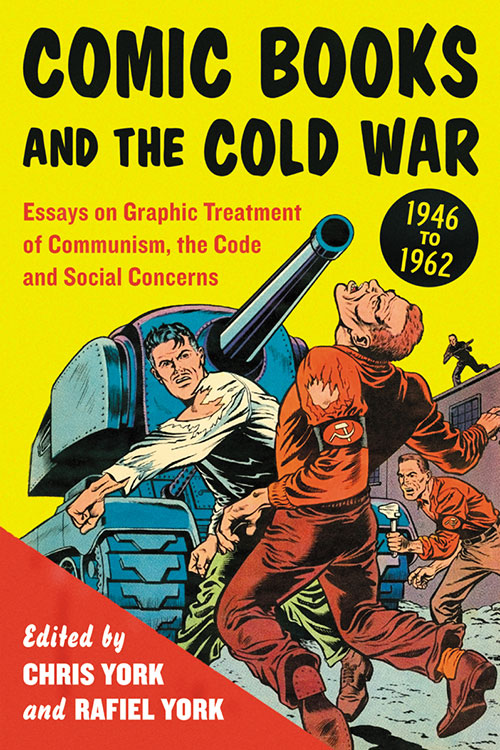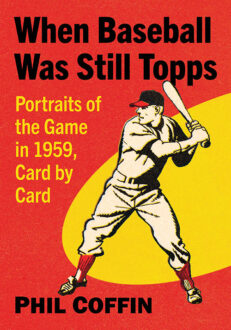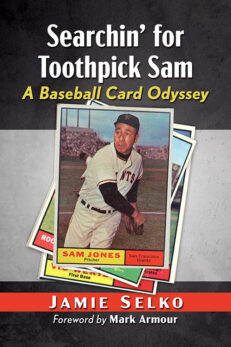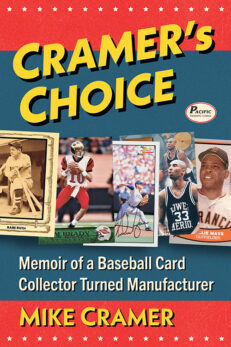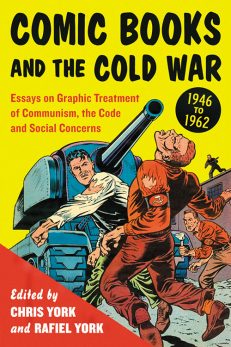Comic Books and the Cold War, 1946–1962
Essays on Graphic Treatment of Communism, the Code and Social Concerns
$29.95
In stock
About the Book
Conventional wisdom holds that comic books of the post–World War II era are poorly drawn and poorly written publications, notable only for the furor they raised. Contributors to this thoughtful collection, however, demonstrate that these comics constitute complex cultural documents that create a dialogue between mainstream values and alternative beliefs that question or complicate the grand narratives of the era. Close analysis of individual titles, including EC comics, Superman, romance comics, and other, more obscure works, reveals the ways Cold War culture—from atomic anxieties and the nuclear family to communist hysteria and social inequalities—manifests itself in the comic books of the era. By illuminating the complexities of mid-century graphic novels, this study demonstrates that postwar popular culture was far from monolithic in its representation of American values and beliefs.
About the Author(s)
Bibliographic Details
Edited by Chris York and Rafiel York
Format: softcover (6 x 9)
Pages: 232
Bibliographic Info: 36 photos, notes, bibliographies, index
Copyright Date: 2012
pISBN: 978-0-7864-4981-1
eISBN: 978-0-7864-8947-3
Imprint: McFarland
Table of Contents
Preface 1
Introduction: Frederic Wertham, Containment, and Comic Books (CHRIS YORK and RAFIEL YORK) 5
PART I : CONTAINING COMMUNISM, CONTROLLING THE ATOM
1. Lights, Camera, Action 101: A Brief Lesson on How to See an Atomic Bomb (NATHAN ATKINSON) 19
2. Decrypting Espionage Comic Books in 1950s America (PETER LEE) 30
3. “He Was a Living Breathing Human Being”: Harvey Kurtzman’s War Comics and the “Yellow Peril” in 1950s Containment Culture (CHRISTOPHER B. FIELD) 45
4. “I Can Pass Right Through Solid Matter!”: How the Flash Upheld American Values While Breaking the Speed Limit (FREDERICK A. WRIGHT) 55
5. Jack Kirby’s Challengers of the Unknown: Establishing Order in an Age of Anxiety (PHILLIP PAYNE and PAUL J. SPAETH) 68
6. Red Menace on the Moon: Containment in Space as Depicted in Comics of the 1950s (JOHN DONOVAN) 79
PART II: CONTAINING SEXUALITY IN THE COLD WAR
7. Girls Who Sinned in Secret and Paid in Public: Romance Comics, 1949–1954 (JEANNE GARDNER) 92
8. Rebellion in Riverdale (RAFIEL YORK) 103
9. The Amazon Mystique: Subverting Cold War Domesticity in Wonder Woman Comics, 1948–1965 (RUTH MCCLELLAND-NUGENT) 115
10. The Girls in White: Nurse Images in Early Cold War Era Romance and War Comics (CHRISTOPHER J. HAYTON and SHEILA HAYTON) 129
11. Horror Camp: Homoerotic Subtext in EC Comics (DIANA GREEN) 146
PART III: THE PROBLEM OF CONSENSUS
12. “Dedicated to the Youth of America”: Deviant Narration in Crime Does Not Pay (CHRIS YORK) 156
13. MAD’s Guest Writers (LAWRENCE RODMAN) 169
14. Beyond the Frontier: Turok, Son of Stone and the Native American in Cold War America (CHRIS YORK) 179
15. East Europeans in the Cold War Comic This Godless Communism (ALEXANDER MAXWELL) 190
16. The Fantastic Four: A Mirror of Cold War America (RAFIEL YORK) 204
About the Contributors 217
Index 219
Book Reviews & Awards
- Winner, Ray and Pat Browne Award—Popular Culture Association
- “Insightful, well-researched…outstanding…recommended”—Choice
- “A great and entertaining collection of essays for comic collectors and anybody interested in the social aspects of life in 1950’s America”—popcultureshelf.com
- “Great detail…More than a book just about comic books. It offers an in-depth analysis of society at that time and how it affected everyone and everything around it.”—Boyce McClain’s Consumers’ and Collectors’ Corner
- “Examines the history of the comic book in relation to global US-Soviet relations and explores the ways in which the medium was influential in structuring narratives surrounding political and social difference in the mid-twentieth century. Chapters include numerous reproductions of relevant comic panels”—Reference & Research Book News

